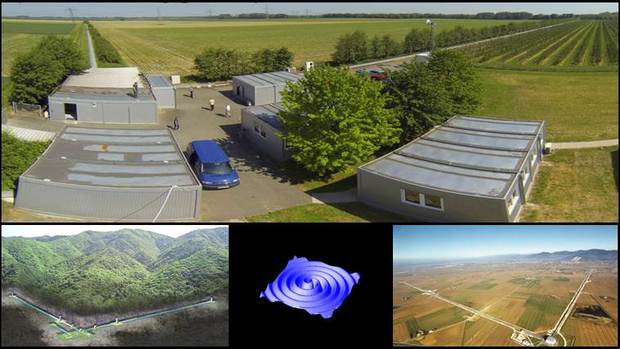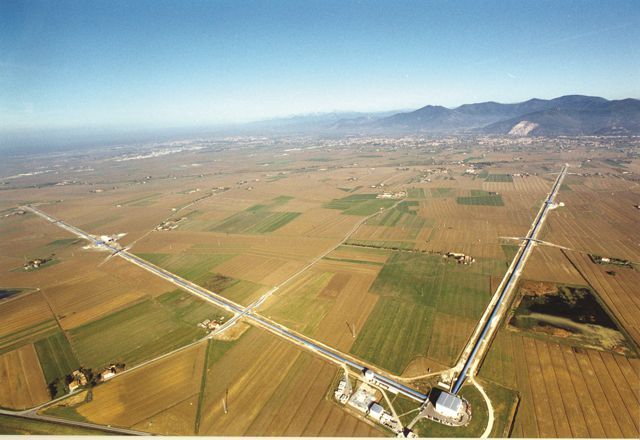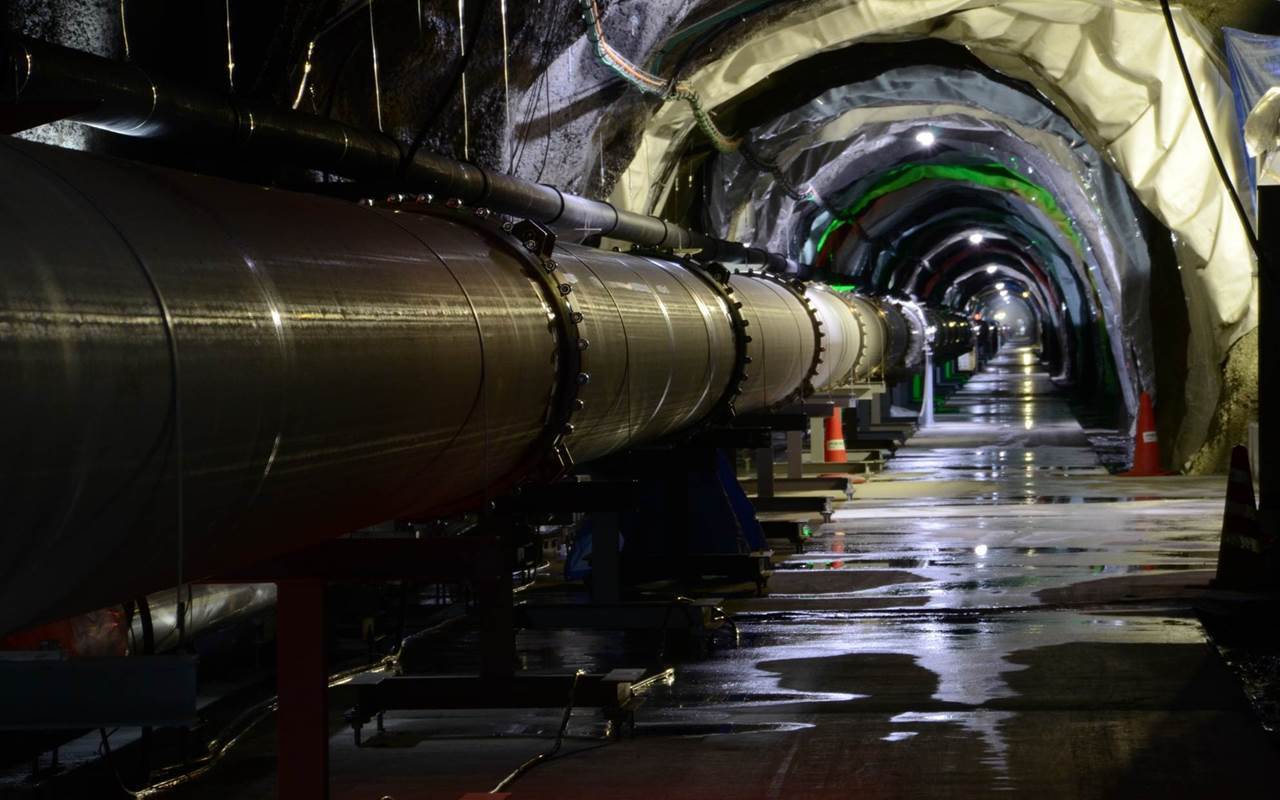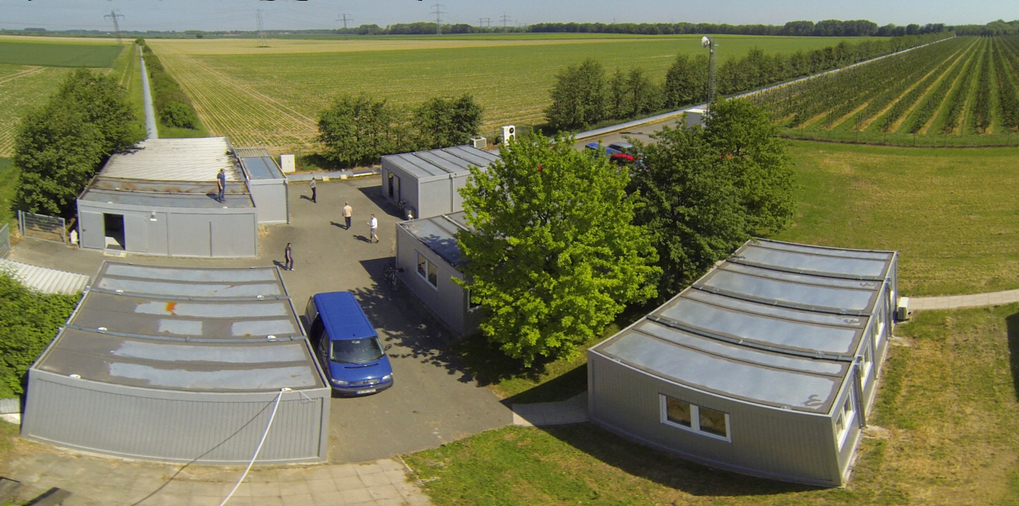
Top: GEO600 near Hannover, Germany (Credit: Harald Lück/AEI). Bottom left: KAGRA cutaway showing the interferometer's location underground (Credit: KAGRA). Bottom right: VIRGO in the Italian countryside (Credit: EGO).
Our Sister Facilities
The two detectors of the U.S. National Science Foundation Laser Interferometer Gravitational-wave Observatory (NSF LIGO) may comprise the biggest gravitational wave observatory on Earth, but it is not the only one. Since the best way to learn about gravitational waves and their sources is to have many detectors observing simultaneously, NSF LIGO and other GW observatories around the world openly share and compare their data. At present, three other gravitational wave observatories are in operation or under construction. These are LIGO's sister facilities.
Virgo
Located outside of Pisa, Italy, Virgo is a gravitational wave interferometer with arms 3km long (LIGO's are 4km long). Virgo is hosted by the European Gravitational Observatory (EGO), a collaboration of the Italian and French governments. In 2017, after completing a significant upgrade to improve its sensitivity, Virgo joined LIGO near the tail end of LIGO's second observing run, marking the first time that three comparable gravitational wave detectors were operating in unison. Within three weeks of Virgo joining the search, not only did they make their own first detection, but they were instrumental in helping to localize the source of the first gravitational waves detected from merging neutron stars, an event that also emitted electromagnetic radiation, i.e., light. That historic first "multimessenger" detection was subsequently observed by at least one-third of the world's professional astronomers. Virgo continues to observe alongside LIGO in current observing runs.
KAGRA
Japan's gravitational wave observatory, KAGRA, is a 3-km interferometer located inside the Kamioka mine (also home to the Super Kamiokande neutrino detector). Despite the fact that Japan is an earthquake-prone country, being underground, KAGRA is exposed to much less seismic vibration than surface instruments like LIGO, Virgo, and GEO600. KAGRA's technology is also quite different than that of LIGO, Virgo, and GEO. For one, it employs a cryogenic system to cool their test masses (mirrors) to such a degree that molecular vibrations within the material itself will be brought almost to a stop. This means that 'thermal noise' will be significantly reduced in KAGRA's system, compared to LIGO, Virgo, and GEO. A key to detecting gravitational waves is to isolate the detector from any and all Earthly vibrations that might mimic or mask a gravitational wave vibration. Such local vibrations include those of the actual molecules in mirrors and their coatings.
GEO600
GEO600 is a 600m (0.6km) interferometer located near Hannover, Germany, funded by both the German and British governments. This working gravitational wave detector also serves as a test site to develop advanced interferometer and optical suspension systems for use in future detectors. An agreement between the GEO collaboration and the LIGO Scientific Collaboration (LSC) ensures the joint analysis of data, and makes all members of the GEO collaboration members of the LSC.






